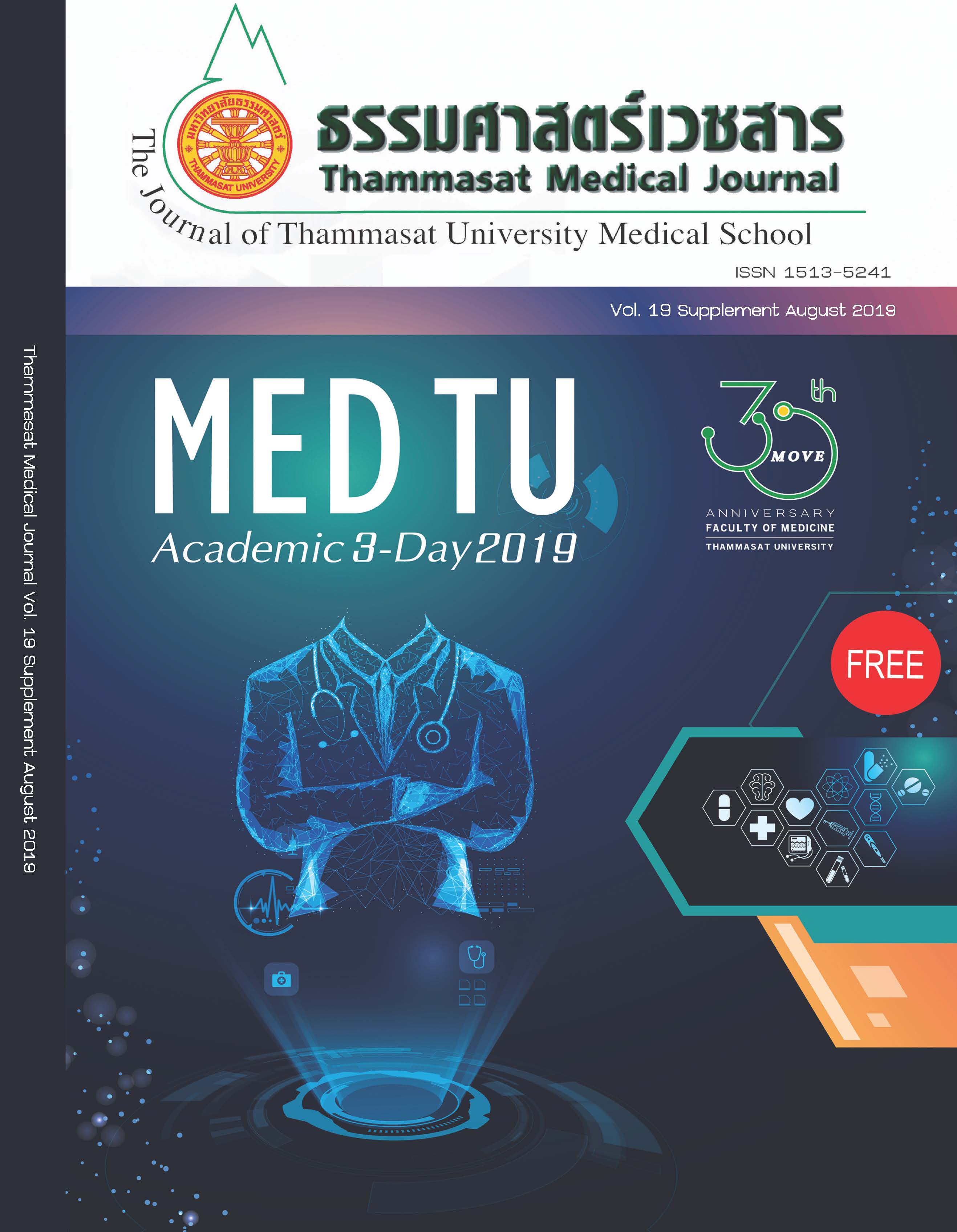Development of Computer-Assisted Instruction for mechanical spinal traction
Keywords:
Education, Computer Assisted Instruction, Mechanical spinal traction, Physical TherapyAbstract
Introduction: Since today is the age of digital technology, computer-assisted instruction (CAI) has becomean efficient alternative learning method for modern education. The objective of the study was to develop computer-assisted instruction for mechanical spinal traction to be used as tutorials and lesson review for physical therapy students. The study also compared learning
achievements between students learning by CAI for mechanical spinal traction and those learning by traditional teaching. Finally, it evaluated students’ satisfaction towards CAI.
Methods: 44 third-year physical therapy students of Thammasat University participated in the study. They were randomly assigned into 2 groups: the first one learning by CAI and the second one by traditional teaching.
Results: Average scores for pre- and post- subtests by traditional teaching as well as by CAI had significantly increased. (p < 0.001 and p < 0.000 respectively). However, no difference was
found in subtest scores and practice test scores after learning lessons between both groups. (p < 0.402 and p < 0.096 respectively) The students’ satisfaction towards CAI fell between average and excellent levels.
Conclusion: Learning achievements between students learning by CAI for mechanical spinal traction and students learning by traditional teaching had increased. However, in term of scores, there was no difference between 2 groups. Therefore, CAI can be a complementary method for traditional teaching.


